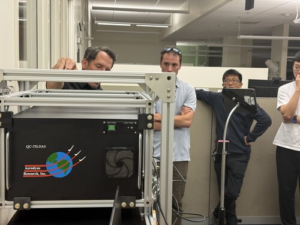
Miners, farmers, surgeons, and even politicians are among the occupations clocking Australia’s longest work hours, according to the latest census data. The analysis reveals that assistant drillers, a common role on mining sites, top the list with an average of 70.3 hours per week. This is followed closely by drillers at 68 hours and shot firers, who handle explosives for mining and construction, at 67.4 hours.
The data highlights a trend where jobs with the longest hours are predominantly located in regional and often remote areas, particularly in the mining and agriculture sectors. However, some urban professions such as neurosurgeons and members of parliament also feature prominently, averaging 58.1 and 58.5 hours per week respectively.
Insights from the Field
Queenslander Skye Jackat, who worked for nine months at an iron ore mine in Western Australia’s Pilbara region, experienced the grueling schedule firsthand. As a driller’s assistant, her typical day began at 4 a.m. and ended at 8:30 p.m. in harsh conditions.
“It was insane, like 40 to 50 degrees most days during summer, doing 12 hours a day,” she said. “It was a lot on the body.”
Jackat noted that despite the demanding nature of the job, it was financially rewarding, earning about $80,000 over nine months. Similarly, Sophie Kelly, a trainee driller, shared her experience of long hours and the challenges of being away from family, yet emphasized the financial benefits.
Gender Disparities and Work Patterns
The census data also sheds light on gender disparities within these demanding roles. A staggering 97% of driller’s assistants are men. Nationwide, full-time workers average 43.7 hours per week, with only about 7% of occupations averaging 50 hours or more.
“The standard is 38 hours, so we’re talking about an extra half a day each week, or more, for all employees,” said Professor John Buchanan from Sydney University Business School.
Buchanan pointed out that many Australian workers are performing significant unpaid work, a trend that has been growing over the past three decades as fewer receive overtime pay.
Historical Context and Trends
Since the national standard working week was reduced from 40 to 38 hours in 1983, there has been a gradual decline in average work hours. Census director Caroline Deans noted that full-time hours have remained fairly consistent since 1966, with notable shifts occurring post-1983.
In urban areas, full-time workers tend to have shorter work weeks compared to their regional counterparts. KPMG urban economist Terry Rawnsley attributed this to differing industry needs and social norms.
“Mines are running 24 hours a day, so to speak, and mine workers are always busy when they are living on site,” he said. “Whereas with white-collar and other employees in urban areas, the traditional eight-hour shift drives work hours.”
Implications and Future Outlook
The census findings highlight the significant impact of work patterns on lifestyle and economic outcomes. With the number of full-time workers in Australia surpassing 10 million, and women now comprising 40% of this workforce, the dynamics of work-life balance continue to evolve.
Despite the high average hours in certain sectors, the census data may not fully capture the nuances of all industries. Deans acknowledged that the timing of the census could affect data accuracy for seasonal jobs.
“A lot of agricultural jobs have high times and low times, for people working in grape picking I wouldn’t think August is a peak time for them,” she said.
As Australia navigates these challenges, the conversation around work hours, gender equity, and economic sustainability remains crucial. The insights provided by the census offer a valuable snapshot of the current landscape and a foundation for future policy discussions.







